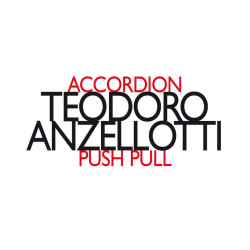





Polityka prywatności

Zasady dostawy

Zasady reklamacji
Muzyka Współczesna
premiera polska: 2003-11-17
seria wydawnicza: NOW SERIES
kontynent: Europa
opakowanie: Triplefoldowe etui
opis:
Editor's info:
Compositions such as these unquestionably go a long way in re-defining the accordion, in liberating it from its relatively short, but heavily cliché-ridden history. In a way, the accordion's role may be compared with that of the saxophone:both children of the industrialisation of musical instrument, both aesthetically defined by certain popular idioms, both re-discovered and re-defined by the composers of New Music. These (and other) new works for accordion have enriched the sound world of the accordion immensely, and I hope that you will share my sense of discovery. - Peter Niklas Wilson
Italian accordionist Teodoro Anzellotti is perhaps best-known for his Winter & Winter recording of the music of Erik Satie. As successful an attempt as any of the later piano recordings, Anzellotti understood better than most the restrained nuance at work in all of Satie's compositions, even the ones written in humor. It is that studious nuance that he brings to this recording of five compositions by as many twentieth century composers: Salvatore Sciarrino, Rolf Riehm, Younghi Pagh-Paan, Vinko Globokar, and Toshio Hosokawa. What is explored in these works is nothing less than the redefining of the accordion as a viable instrument in the creation of new music outside the realms of its often banal and embarrassing folk traditions. The manner in which this done very successfully here is by all of the recording's composers examining the instrument's physical properties and determining its tonal abilities from there. In Sciarrino's Vagabond Blu (a composer who hates the traditional scent the accordion gives off), he moves toward its bellows to find its heart, the back and forth movement of breath that, when the keys and buttons are pressed, provides the vibration for voice. Sciarrino uses a sequence of simple, then broken F minor and G minor chords to illustrate the voice, but it is in the breathing of the bellows itself where he finds the instrument's relevance, hence the long silences and whooshes played by Anzellotti. In Riehm's case (Push Pull), he sees the fingerboards, top and bottom, and distinct identities held together by one heart: again, the bellows. His systems of oppositions create a polytonal richness from three sequential modes. Globokar's work is nothing short of demonic, concerning itself with the extremes of the instrument's registers and the percussive possibilities of the bellows. But the most interesting pieces here are by the Asian performers. Ne Ma-Um, by Korean Pagh-Paan, is the most stridently beautiful piece here. In this 15-minute work, she redeems the accordion as a cold, mechanical, and limited instrument of expression and transforms it via bellows, tremolos, incessant trills, soft droning chords, and liquid fingerings into a mysterious, breathing heart full of depth and dimension. Melodia by Hosokawa is a sculpted and very subtle study of the layering and cross-fading of runs, single notes, and chords, creating patterns via the bellows that are erased yet leave their literal, echoing traces on the next measure of music. Push Pull proves that the efforts made by Anzellotti and his compatriot Richard Galliano have moved the accordion into a space that may indeed be small, but is virtually irreplaceable in the world of color and tone, and whose possibilities for sonic richness have barely been tapped.
Thom Jurek, All Music Guide
utwory:
Vagabonde Blu (08:46)
Push Pull
Ne Ma-Um
Dialog Uber Luft (09:20)
Melodia
more info: www.hathut.com
Opis